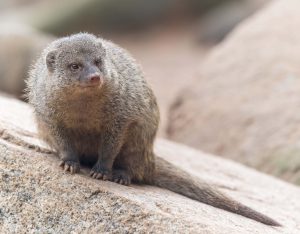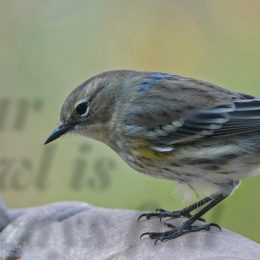
BY JACK SPAULDING
I recently returned from a six-day mission trip to Haiti. Haiti is a country with which I have become well-acquainted as I have been there seven times.
Overall, the western side of the island of Hispaniola is mostly devoid of jungle and woodland having been stripped of wood for charcoal for cooking fires. It is hard to imagine the bareness of the land from the capital city of Port-au-Prince north. However, the southern portion in the Les Caye area has a proliferation of jungle, farm fields, and banana, plantain and mango groves.
In Haiti, any critter caught or captured is fair game for the cooking pot. Needless to say, wildlife of any type is scarce.
I always make a mental list of my wildlife encounters while there. The last trip was typical with only a few species listed. During this most recent trip, I had tallied but three egrets, uncountable geckoes, a few small unidentifiable brush land birds, some mourning doves and a rat.
I didn’t actually see it, but someone on the return to PAP from Les Caye in our SUV shouted out, “There’s a squirrel!” Our native Haitian missionary said, “No … it was a mongoose.”
Say what? Holy “Rikki-Tikki-Tavi!”
I’ve read The Jungle Book, and the mongoose is from India, not Haiti. These little cobra killers are some of the toughest and fastest predators around!
Looks like Old Jack was about to get a lesson in an invasive species in a country other than the United States.
It seems the small Indian mongoose (Herpestes auropunctatus) was introduced to Haiti in the late 19th and early 20th centuries and quickly became a destructive invasive species. It greatly damaged the natural ecosystem on the island. The mongooses were originally introduced to help control the enormous populations of mice and rats. But when those rodents ran low, the mongooses started eating everything else.
While researching on the mongoose population of Haiti, I learned a Ball State grad from Muncie did an honors thesis on the Haitian mongoose. This struck me as odd — discovering a certified mongoose master had matriculated from my favorite college, Old Fruit Jar Tech!
I read the thesis, available online, with interest (find its link in this story at ElectricConsumer.org). As I read, I was struck by the fact mongooses are not easy to trap, even when using a wide variety of bait such as dried fish, shredded coconut, canned dog food and Haitian peanut butter — which contains cayenne pepper.
My hat is off to the Muncie mongoose master. I find it amazing where you can find expertise on even the rarest of subjects.
Speaking of the cayenne pepper-laced Haitian peanut butter, one of the ladies accompanying our group spread it on a piece of toast one morning at breakfast. After a couple of bites, she said, “This bread is really hot and spicy.”
It’s not the bread!
On every trip I make to the country, our native Haitian missionary asks me to bring along a few jars of American-style peanut butter. It seems it’s not only the mongooses that don’t care for Haitian peanut butter!
Jack Spaulding is a state outdoors writer and a consumer of RushShelby Energy living along the Flatrock River in Moscow. Readers with questions or comments can write to him in care of Electric Consumer, P.O. Box 24517, Indianapolis, IN 46224; or email jackspaulding@hughes.net.



